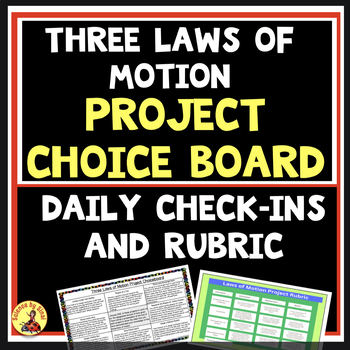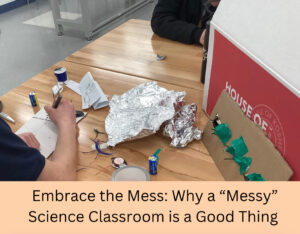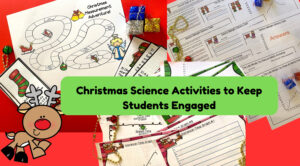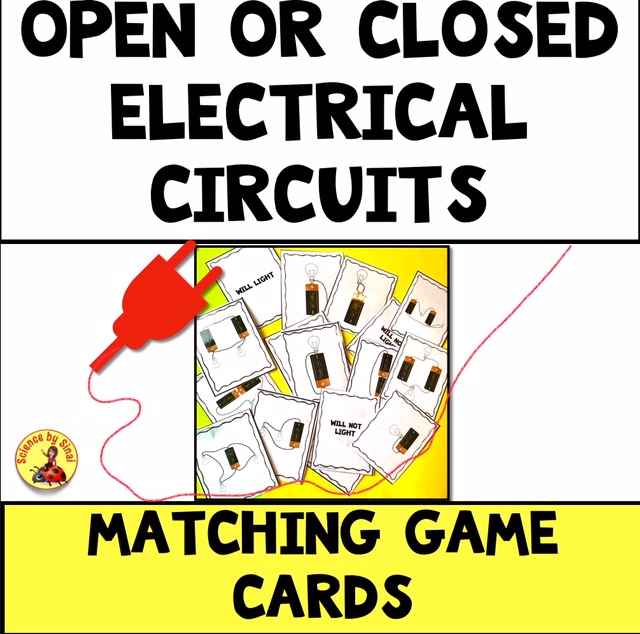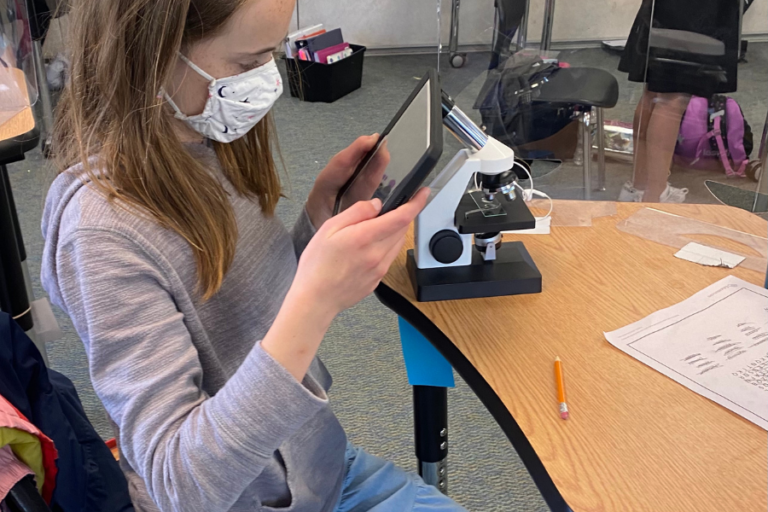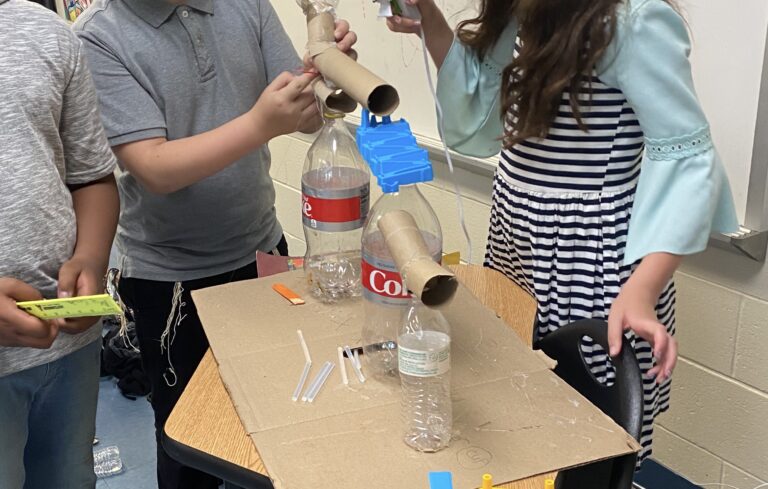Dealing With Students Who Are Reluctant To Learn
At some point in our teaching careers, we all encounter students who are reluctant to learn for various reasons. These students can be challenging as they may become disruptive in class.

Dealing With Students Who Are Reluctant To Learn
July 2024
I’ve put together a brainstorm of methods that I’ve used throughout the years to help engage these students and draw them into our conversations and activities.
Stay Current
Learn the latest trends and tie them into your topics when you can. If you know what games they’re into or what’s trending on social media, it makes things much more engaging for them. Students may roll their eyes a bit, but they will be quietly impressed that you know about their world. It might sound cliché, but if you “speak their language” to a certain extent, it does help.
Mix up Your Days
You don’t need to have fun and games every day, but you also don’t want to lecture day after day. Show videos, find educational games, podcasts, coloring pages, STEM projects, etc. The more you surprise the students and keep them on their toes, the more interested they will be in coming to your class.
Brainstorm Hands-On Activities
When I’m teaching and I see even one child looking sleepy, dozing off, or bored, I immediately feel the need to figure out how to do something hands-on. Throughout the years, it has served me well. Honestly, some of my better activities have come from these spontaneous ideas!
When I first started teaching, it was hard to find ideas for activities. Now there’s such an abundance of websites that there’s barely an excuse not to be hands-on!
Make Any Homework Relevant To Their Lives
Every once in a while, I do have to give homework that is just a reinforcement of the class material. However, most of the time, I like to assign things that tie in real-world applications or personal experiences. For example, scavenger hunts in their homes to look for examples of the three laws of motion, types of plastic, or changing states of matter. Anything that ties into their own lives makes the homework much more enjoyable and meaningful.
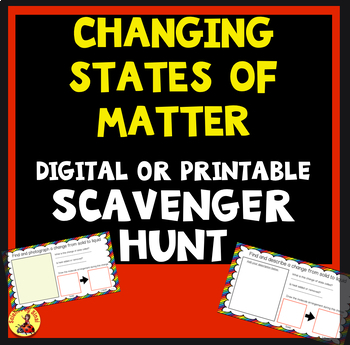
Keep Your Body Language Positive
Being up out of your seat and walking around can be exhausting but extremely effective. Sitting at your desk gives off the message that you are giving them busywork, which is almost guaranteed to cause reluctance to work. The more you are genuinely interested in their work, the more difficult it will be for students to act out.
Maintain eye contact, smile genuinely, and use open and welcoming gestures when you’re interacting with the students. Nonverbal cues such as nodding attentively, keeping a relaxed posture, and facing students directly while speaking give off warmth and encouragement. Students are very conscious of our facial expressions and tone of voice. It can significantly impact how they feel about our words and whether they decide to participate in class. Our goal is to create a sense of trust and respect along with enthusiasm for learning.
Make Your Assignments Attractive
I know this sounds a bit bizarre, but I have found that making your handouts more attractive is effective. I started selling my resources on Teachers Pay Teachers, and I was adding visual appeal with borders, clipart, and nice fonts to my lab instructions and data sheets. The students noticed that I was taking more time and effort to create their materials. I didn’t realize it at first, but I was communicating that I value their work and effort at a higher level.
Clear, detailed instructions and organized layouts help the students better understand what is expected of them. This reduces confusion and fosters a positive attitude towards completing assignments. I noticed that the students take the work much more seriously. Gone are the days of the plain old Microsoft Word, 12 pt Helvetica boring worksheets!
Implement Choice Boards
Many students are reluctant to learn because they are shy about revealing their weaknesses in front of the class. Be very careful when you assign projects to have options for all types of students.
Choice boards can be a game-changer, especially for reluctant learners. By offering students a variety of tasks or activities to choose from, it gives them the power to take ownership of their learning. It caters to different learning styles and preferences and lets the students explore topics that genuinely interest them. The reluctant learners seem to enjoy having the control, which can help increase their motivation and participation.
Have Break Days
My new favorite activity is educational coloring pages while listening to different kinds of podcasts on the same topic. It’s very hard to dislike coloring. However, even if students don’t want to color, they can still listen quietly to the podcast. Incorporating these brain break days, especially after a big test or project, helps the students know that you understand that they need a rest.
Use Good Videos
Quite often, I see on the Facebook teacher forums that teachers are looking for 40-minute videos to fill an entire class. This may be an unpopular opinion, but I don’t believe in that.
I like short 2 to 3-minute videos that we can perhaps watch twice and take notes. I’ve mentioned in my other blog posts that I often show the video with all of the students’ materials put away and then watch it again to take some good notes.
Screen your videos carefully to make sure that they don’t have anything questionable and that they actually have content that’s accurate, interesting, and worthwhile.
No Need For A Lab Report on Every Lab
When I first started teaching at my school, there was a science teacher before me who had students do a lab report after every single lab. When the students would walk into my class and see equipment on the table, instead of being excited, they would ask if they were having a lab report due!
That really bothered me, so I tried to think of many other ways for them to show that they understood the lab. Sometimes we use videos that they create or they may teach each other the results with presentations.
Occasionally, we do write a formal report when I want them to emphasize critical thinking, data analysis, and drawing conclusions. I know we want to have grading data, but there are many ways to assess without the traditional format.(10 Ways to Assess Students in the Science Classroom).
Create Small Wins in Your Classroom
I give 10 points on student averages for some pretty small things throughout the semester. I also make sure that they are very obtainable.
A student who is overwhelmed by a low test score or an unsuccessful project is likely to give up if they don’t see a way of digging themselves out of their present average.
Think of smaller things such as the group that cleans up the quickest gets five points or remembering to bring their materials to class gains a free 10 points. Occasionally, I will have a “folder check” and everyone has to hold their science folders in the air. The students that brought them get an automatic 10 points.
I’m always brainstorming extra credit ideas for the end of a test or a project where students can push themselves and be rewarded for it. I also make any homework worth 10 points so that anybody with a score on a test that they are not happy with can easily succeed in the semester grade by simply doing their work.
Tap Into Your Students’ Talents
I’ve had some amazing artists in my class, and I love to have them create diagrams and posters for us. I’ve had other kids make up cute songs about various units. Some students love to make videos to explain concepts.
Do your best to learn what you can about student interests and showcase them. If I am giving notes during class, I often choose a “secretary.” That student writes the notes as I speak, and their notes are projected on the board for the others. I rotate the secretary student throughout the class, and they love it.
Take Them Outside!
Not for recess, but for really looking at their environment. I have a whole blog post on different ideas to do outside.(Science Activities to Do Outside With Middle School) Maintain educational value but offer a great break. Of course, you’ll have to go through the rules before you go outside so it doesn’t become recess. I find having an iPad or a clipboard with specific goals in place makes a big difference.
Feed Them Once in Awhile
Walking around and giving students Jolly Ranchers while they are taking a test goes a long way toward building a nice relationship with the students. Try to think of ways that you can use food or even baking if that’s available to you.
Different recipes for baking are a great way of teaching chemical reactions! S’mores during physical and chemical changes is very fun. Popping popcorn while learning the gas laws gets critical thinking going, especially if you film it in slow motion!
Give Them Small Prizes or Stickers
Introducing silly prizes, or even simple rewards like stickers, works wonders at creating a positive atmosphere, especially for the reluctant learners. These little gestures not only recognize students’ efforts but also let them know that you recognize their achievements, no matter how small. Silly prizes add an element of fun and unpredictability, making learning more fun.
I know it’s insane, but my eighth graders actually get more excited about stickers with a science theme than my fifth graders! Silly buttons or cheap pens go a long way. You can think of a thousand different ways to make it easy for them to “win” the prizes.
Get a Little Silly With Your Assignments
Yes, my students roll their eyes at me all the time, but they do actually enjoy us getting a little silly with topics that can be rather dry.
When we learn about speed, we go outside and turn into zombies! When we learn about genetics, we design our own aliens, cross them to make alien babies, and then make them three-dimensional. When we learn about the different types of chemical reactions such as synthesis, decomposition, single replacement, and double replacement, we use creatures called weebles and create stories of their lives in place of the elements.
Talk to Each Student As An Individual
Show genuine interest in each individual’s life. Talk to them as an adult and not in any condescending manner. Genuinely apologize if you make a mistake and treat them as fellow adults.
Of course, I don’t mean crossing the line of being buddies with them, but letting them know that you respect them goes a long way. If the class is upset because you just announced that the test is going to land on the same day as their math test, be accommodating and try to work out a different date. That small gesture goes a long way!
Let students know that you are available, even if it’s just via email. I had a rather difficult student who was refusing to do any work. I asked him if something was wrong, and he obviously didn’t want to say it in front of the class. I asked him to email me on his iPad, and he did. He told me that his sister was getting surgery, and that he was very worried and couldn’t concentrate. I emailed him back during class and told him that as long as he wasn’t disruptive, he could relax and just listen. This student was a different person for the rest of the school year!
Keep An Eye On The Pace Of The Class
I have the benefit of using digital notebooks, so I can see how fast or slow students are keeping pace with me. If you’re not using digital notebooks, it is best to be up and looking over their shoulders to see where they are. Perhaps you’re moving too fast, which can cause quite a few students to shut down. They may rush through and not understand the purpose of what they are doing.
Conclusion
Engaging reluctant learners requires a variety of approaches that address their academic and emotional needs. Our goal is to create a classroom atmosphere that will have students feeling valued, motivated, and excited to learn.
Please check out my other blog posts on classroom management on this blog at SciencebySinai.com.


